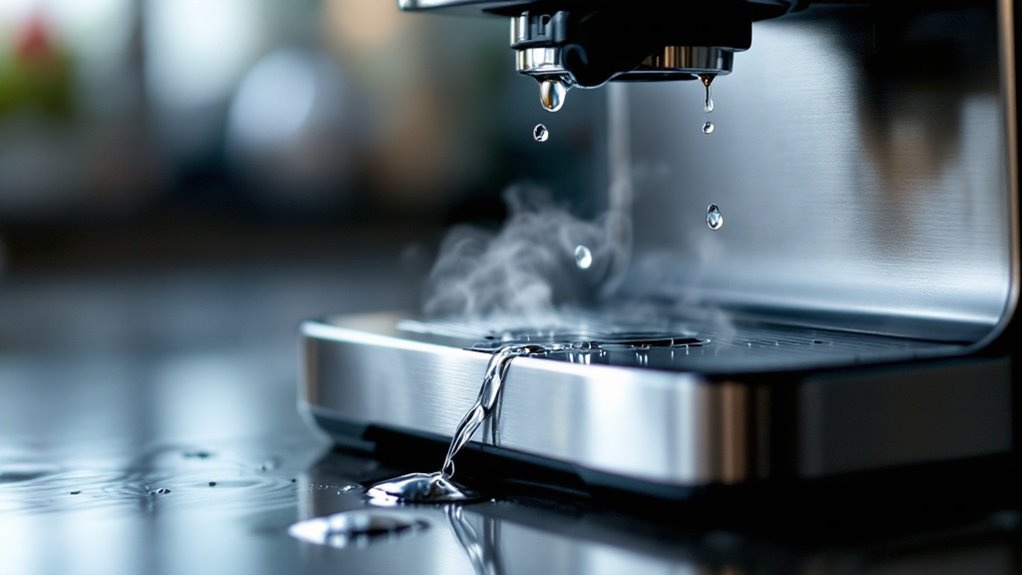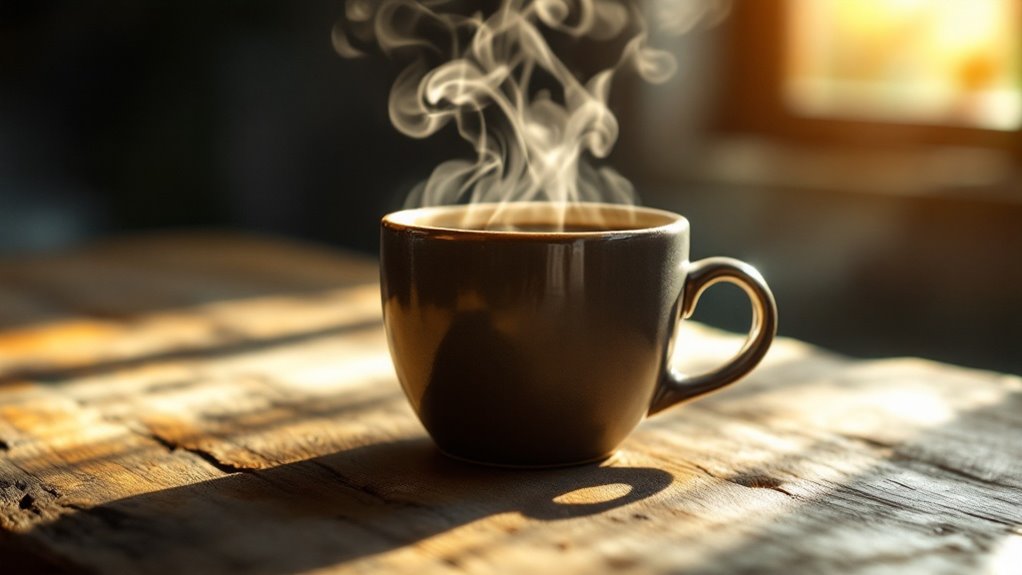







Your morning cup of coffee should feel like a smooth embrace, not a gritty handshake. If you're finding sediment at the bottom of your mug, it's likely tied to your grind size, brewing method, or equipment. Blade grinders can create uneven particles, while French presses often let fine grounds slip through. Even your beans' freshness plays a role. But don't worry—there's a way to fix it. Adjusting your grind, upgrading your tools, or tweaking your technique could be the key to a cleaner cup. The solution might be simpler than you think, and it's worth exploring further.
Key Takeaways
- Blade grinders create uneven particle sizes, leading to grittiness in your coffee.
- French Press brewing allows fine particles to slip through, causing sediment in your cup.
- Poor-quality or worn-out burr grinders produce inconsistent grinds, increasing grittiness.
- Insufficient settling time after brewing leaves fine grounds suspended in your coffee.
- Aggressive stirring or pouring reintroduces settled grounds, making your coffee gritty.
Common Causes of Gritty Coffee
Starting with the grind, using a blade grinder instead of a burr grinder often leads to uneven particle sizes, creating a gritty texture in your coffee. Blade grinders chop coffee beans randomly, producing a mix of coarse and fine coffee particles. These fines, especially when brewing with a French Press, slip through the metal filter, leaving sediment in your cup. Even with a burr grinder, poor-quality or worn-out burrs can create inconsistent grinds, increasing the presence of fines that contribute to grittiness.
Your brewing method also plays a role. French Press brewing, which relies on a coarse grind, can still produce grit if the grind is too fine or if the filter mesh isn't fine enough to trap smaller particles. Additionally, insufficient settling time after brewing allows sediment to remain suspended in the liquid. Aggressive stirring or pouring techniques can disturb settled grounds, reintroducing grit into your cup. To minimize grittiness, make sure your grinder produces uniform coffee particles, adjust your grind size appropriately, and allow adequate settling time before pouring.
How Grind Size Affects Grittiness
Grind size directly influences the texture of your coffee, with finer grinds often leading to a grittier cup. When you make coffee, smaller particles from a fine grind can slip through filters, creating sediment that affects mouthfeel. Conversely, coarser grinds produce larger particles that are less likely to escape filtration, resulting in a smoother brew. For example, a French press requires a grind size similar to coarse sea salt to minimize sediment and grittiness. However, if your grinder produces inconsistent particle sizes, you'll end up with both fines and coarse grounds, exacerbating grittiness. Espresso, which demands a fine grind, can also suffer from excessive fines if the grinder isn't calibrated properly, leading to a gritty texture. To avoid this, invest in a high-quality burr grinder that guarantees uniformity in grind size. Adjust your grinder settings based on your brewing method—coarser for immersion methods like French press and finer for espresso. By controlling grind size, you can make coffee with the desired texture, minimizing grittiness and enhancing your overall experience.
Brewing Methods That Reduce Sediment
While grind size plays a significant role in sediment control, your choice of brewing method can further refine the clarity and texture of your coffee. To minimize grit, adopt best practices tailored to your preferred technique. For drip coffee makers, use a paper filter to trap fine particles and retain coffee oils, ensuring a cleaner cup. In pour-over or French press methods, opt for a metal mesh filter with a finer micron size to reduce sediment while preserving flavor complexity. Cold brew, with its coarse grind and extended steeping time, naturally produces less sediment, making it an excellent option for smoother coffee. If you enjoy French press but dislike grit, employ a double filtration system by pouring the brewed coffee through a fine mesh strainer. For a nearly sediment-free experience, consider the AeroPress, which combines a paper filter and pressure extraction to deliver a clean, rich brew. By selecting the right brewing method and adhering to these techniques, you can achieve a balanced cup with minimal grit and enhanced coffee oils.
Equipment Tips for Smoother Coffee
Achieving a smoother cup of coffee often hinges on the quality and maintenance of your equipment. Start by investing in a burr grinder instead of a blade grinder. Burr grinders produce a more consistent grind size, reducing the likelihood of grittiness. Make sure your grinder's burrs are clean and properly aligned, as misaligned or dirty burrs can create excessive fines that contribute to sediment. If you're using a French press, opt for a coarser grind setting to minimize fine particles passing through the filter. Additionally, consider using a secondary fine mesh strainer when pouring your coffee to catch any remaining micro-grounds. Regular cleaning is essential—take enough time to clean your grinder, filters, and brewing equipment to prevent buildup that can affect grind consistency and texture. By maintaining your equipment and selecting the right tools, you'll guarantee a smoother, grit-free coffee experience. Precision in grind size and cleanliness in your setup are key to achieving the desired texture in every cup.
Troubleshooting Gritty Coffee Issues
The texture of your coffee can turn from smooth to gritty if fine particles and sediment make their way into your cup. To troubleshoot this issue, start by evaluating your grinder. Blade grinders often produce uneven grind sizes and excessive fines, leading to grittiness. Switch to a burr grinder and set it to a coarse grind to minimize fine particles. If you make coffee with a French press, the metal mesh filter may allow micro-grounds to pass through. Let the brewed coffee sit for 1-2 minutes before pouring to allow sediment to settle at the bottom. When you pour, use a secondary fine mesh strainer to catch any remaining micro-grounds and see if that helps. Additionally, make sure your coffee beans are fresh, as stale beans can contribute to inconsistent grind quality. By addressing these factors, you can greatly reduce grittiness and achieve a smoother cup. Experiment with these adjustments to refine your brewing process and enjoy a consistently better texture in your coffee.
Disclosure: As an Amazon Associate, I earn from qualifying purchases.



